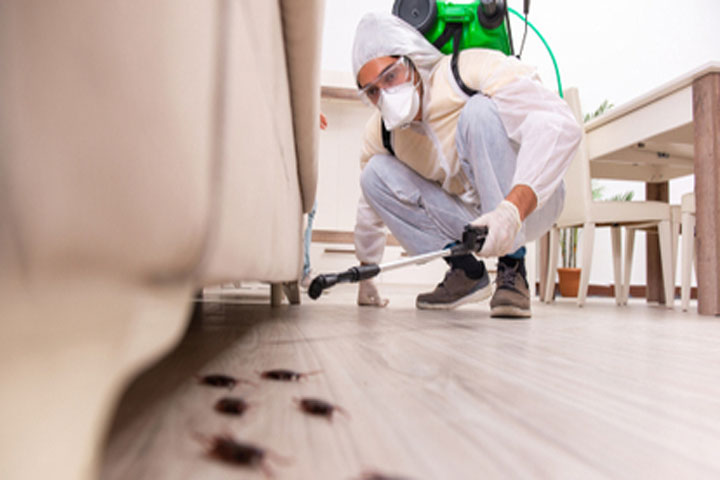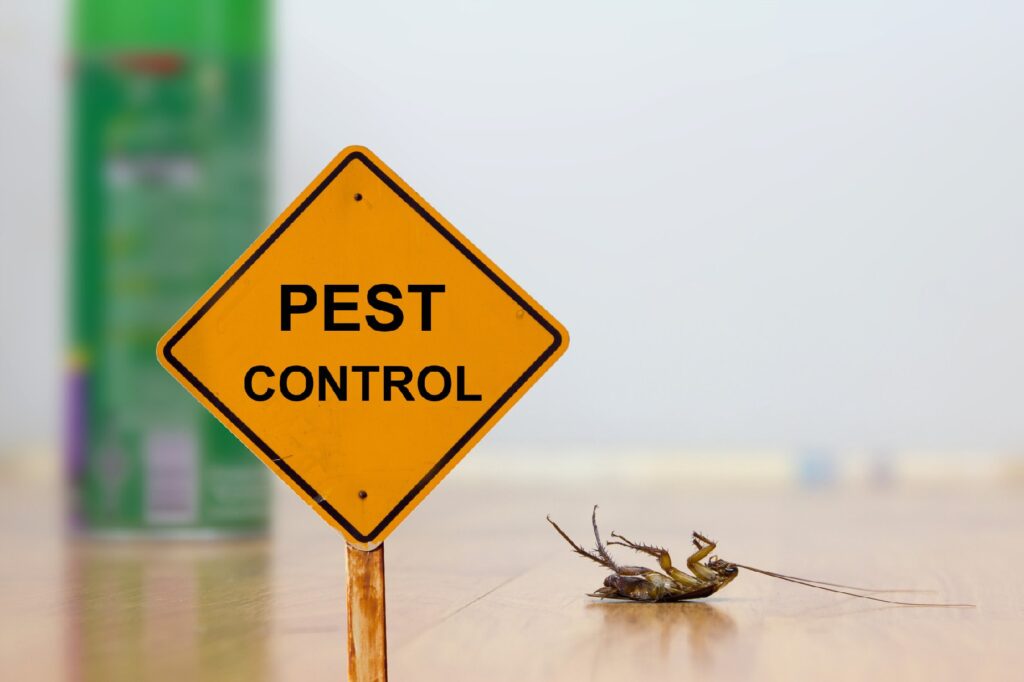Chicago Crawler Extermination Services: Safe and Reliable Removal
Wiki Article
A Comprehensive Guide to the Different Kinds Of Insect Control Approaches
With the myriad of bug control techniques readily available, it can be overwhelming to discover the most efficient option for a details parasite issue. In this detailed guide, we will explore these different kinds of parasite control techniques, using insights right into their applications and benefits. By the end, you will have a clearer understanding of which method might be the best fit for your parasite control needs.Chemical Bug Control Techniques

One usual sort of chemical parasite control is insecticides. Pesticides are chemical substances that are especially developed to eliminate or drive away insects. They can be applied in various forms, such as sprays, lures, or cleans. Pesticides target specific insects, such as mosquitoes, termites, or ants, and can be utilized both inside your home and outdoors.
An additional sort of chemical pest control is rodenticides. These are chemical substances developed to regulate populations of rodents, such as rats and computer mice. Rodenticides are usually made use of in lure kind, which attracts the rats and afterwards eliminates them after consumption. They are generally used in agricultural settings, along with in household and commercial buildings (Customized pest control solutions Chicago).
Herbicide, likewise called herbicides, are one more kind of chemical insect control method. Herbicides are created to precisely kill undesirable plants, called weeds, without triggering injury to desirable plants. They are typically utilized in farming, landscaping, and horticulture to regulate the development of unwanted plant life.
While chemical parasite control methods can be extremely effective in getting rid of insects, it is very important to use them deliberately and follow safety and security guidelines. Overuse or abuse of chemical pesticides can have negative influence on human health and the setting. It is important to employ these techniques properly and take into consideration different insect control techniques whenever feasible.
Organic Insect Control Approaches
Biological bug control methods involve the use of living microorganisms or natural compounds to handle and regulate pest populations. Unlike chemical approaches, which frequently depend on artificial pesticides, biological control approaches make use of the all-natural opponents of pests to manage their populations. This technique is thought about even more eco-friendly and lasting, as it lowers using dangerous chemicals and lessens the risk of chemical resistance.One extensively utilized organic parasite control technique is the introduction of all-natural predators or bloodsuckers. Ladybugs are introduced to regulate aphids, while certain wasp varieties are released to target caterpillars. These predators and parasites eat parasites, minimizing their numbers and stopping problems.
One more organic control method is the usage of virus. Particular bacteria, infections, and fungis can be utilized site web to infect and kill certain bugs. The germs Bacillus thuringiensis is generally utilized to regulate caterpillars, as it creates toxic substances that are lethal to these pests.
Organic control methods can likewise involve using pheromones or natural materials that interfere with the mating patterns of pests. By disrupting their reproduction, these techniques aid to decrease pest populations with time.
While organic parasite control methods are typically efficient, they may need longer durations to accomplish desired outcomes compared to chemical methods. Furthermore, mindful consideration should be offered to the option and launch of all-natural opponents to stop unplanned harm to valuable microorganisms or communities.
Physical Parasite Control Approaches
To properly handle and control pest populations, alternate bug control methods called physical bug control techniques are utilized. These methods include using physical obstacles, traps, or tools to avoid bugs from accessing or damaging home. One typical physical bug control approach is the usage of screens or nets to maintain insects out of buildings or yards. These screens are typically made of fine why not try these out mesh material that permits air flow while preventing insects from going into. One more physical bug control method is the setup of fencings or wall surfaces to keep larger insects, such as deer or bunnies, out of gardens or agricultural areas. These obstacles physically block the bugs' accessibility to the area, reducing the capacity for damages. Furthermore, catches and tools can be utilized to record or fend off bugs. Sticky traps can be positioned in locations where pests are a trouble, and the bugs come to be stuck to the adhesive surface. Ultrasonic devices can also be utilized to release high-frequency noises that are undesirable to pests, creating them to leave the location. Physical bug control techniques are an ecologically pleasant alternative to chemical pesticides, as they do not rely on the use of dangerous chemicals.Natural Insect Control Techniques
Natural pest control methods supply a sustainable and environmentally friendly strategy to handling and getting rid of bugs. One of the most typical natural pest control methods is biological control. By adopting these natural parasite control methods, individuals and areas can effectively manage insects while decreasing the unfavorable impacts on the environment and human health.Integrated Insect Monitoring (IPM)
Integrated Insect Management (IPM) is a comprehensive and methodical technique to pest control that combines various strategies and techniques to efficiently take care of parasites while lessening using chemical pesticides. IPM aims to keep insect populations listed below the financial injury level by using a mix of social, biological, and chemical control approaches.
Cultural control techniques entail modifying the environment to make it less beneficial for bugs. This can consist of practices such as plant rotation, correct sanitation, and making use of immune plant selections. By producing undesirable conditions for insects, cultural control approaches can considerably minimize parasite populations.

Chemical control techniques are made use of as a last hope in IPM. They involve the targeted and cautious usage of pesticides to handle pest populaces. Unlike standard insect control techniques, IPM aims to minimize making use of chemical pesticides by using alternative approaches.
Integrated Pest Monitoring (IPM) is an aggressive strategy that focuses on long-lasting bug administration instead than counting solely on reactive measures. By integrating multiple control techniques, IPM offers a more sustainable and ecologically pleasant method to pest control.
Final Thought
It talked about chemical, biological, physical, and natural bug control approaches, pest home as well as the incorporated parasite monitoring approach. By recognizing these various approaches, individuals can make enlightened decisions on which parasite control method is most suitable for their certain needs and choices.Report this wiki page